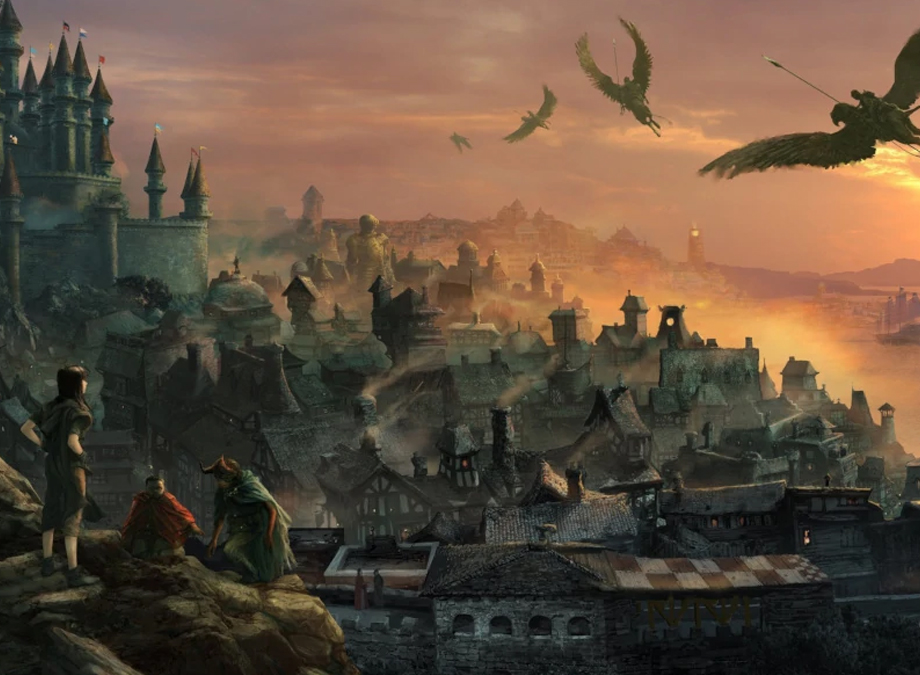Waterdeep, the City of Splendors. If Baldur’s Gate is the richest city along the Sword Coast, Waterdeep would be the most well-known by far.
But do you know where it came from?
Welcome back to Lore-Win, the D&D Lore Deep Dive article series. As always, I am your humble Loremaster, Sokar.
And today I’ll be delving deep down, under the city streets and sewers and into the Undermountain. There at the furthest depths of the we’ll sift through the soil at the base of Faerun’s most famous city to expose the foundations below.
And what storied foundations it has.
The Founding Time
Our tale begins long ago, in the year -8500 DR, the Founding Time. This was an age where dwarves and elves ruled the land, and the humans first began to expand their nations.
Where Waterdeep stands today, there once was Aelinthaldaar. A predictably hard-to-pronounce elven city that stood as the capital of an elven civilization known as Illefarn. But the elves would have perhaps the least influence on what would become Waterdeep. In fact, the real progression towards the city we now know would not come for thousands of years.
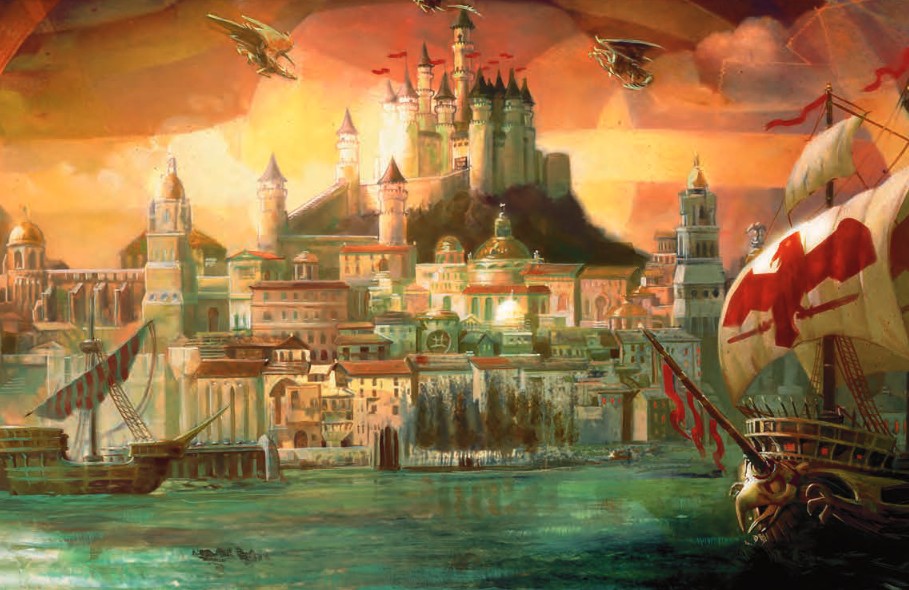
And what a city it becomes.
Source: City of Splendors: Waterdeep
-1288 DR, the elves of Aelinthaldaar were joined in their home by a clan of dwarves led by King Melair the first.
Well, to say “in their home” is a bit dishonest. To be more accurate the dwarves built their own city within the mountain beside and beneath the very feet of the elves. In their new, much more pronounceable city of Melairbode the Clan Melairkyn dwarves mined mithral.
As they mined more mithral, more dwarves arrived, in turn, mining more and more mithral. The further they chased the metal through the earth, the closer they grew to the surface, in turn making the elves uneasy.
After all, I can’t imagine it would be fun to have a dwarf burst out of your kitchen floor.
...or have your city sink into the ground because the dwarves dug a big hole under it.
Regardless, the elves came up with a plan and in exchange for a large supply of mithral, they cast a magical spell on their plateau. This spell kept the ground separating the two cities stable, and ensured that Aelinthaldaar would never collapse in upon the heads of the dwarves.
But in time, both cities would find their own threats.
For the elves, humans would prove to be what drove them from their homes. As the human barbarians pressed into their territory, the elves of Illefarn decided to withdraw from their home. First, they magically razed the city of Aelinthaldaar from the face of the earth - mercifully erasing the need to keep spelling it along with the city. All the evidence that remains of the city is their subterranean crypts, and the magic they cast upon the earth.
The elves who had lived there fled to Evermeet, an island kingdom of the elves, and in their place settled those very same humans who had caused them to flee.
Unaware of its existence, the barbarian tribes settled atop the ruins of the elven city thanks to its location. It was perfect for a center of trade. As such, tribes opted to hold trademoots there. Its position on the Sword Coast meant that trade could be conducted with people further south, and the deep harbor meant that large ships could sail in to load and unload large quantities of goods.
While at first (around -1088 DR specifically) the tribes only visited the site temporarily for trademoots, they soon established a more permanent hold there.
But of course, holding such a coveted location inevitably leads to conflict.
Wizards and Drow and Dwarves, oh my!
The Melairbode dwarves soon found themselves faced with one of these conflicts. A conflict that is as familiar to us as it is to those who lived thousands of years ago. A conflict that has raged untold times since before the age of written history.
Annoying neighbours.
Enter -750 DR. A human tribe known as the Netherese had noticed the region and had decided that it looked like a pretty ritzy place to build a city. Nestling themselves into a section of Melairbode that the dwarves hadn’t yet mined, the Netherese mages hewed their new home from the stone of the mountain.
Some claim they sought this place out to use a rich dwarven kingdom as a shield from their foes. Others claim that they had sought out the ancient elven magics that guarded the land. All we know for sure is that they did not ask the dwarves about moving in first, and didn’t seem to particularly care about their feelings on the matter.
As soon as they built their new home, the Sargauth Enclave as they called it, they sealed out the dwarves.
Seriously, they just sealed up the entrances so the Melairbode dwarves couldn’t get in.
Not cool.
These neighbours lived awkwardly side by side as Clan Melairkyn kept up their dwarf-y business, and the Netherese experimented in the arcane. The Netherese mages played with the magical mantle that the elves had previously created, enhancing it and spreading it. Eventually, they would spread it to protect the entirety of their Sargauth Enclave.
The Netherese also kept themselves busy with building up their new home. They crafted grand temples to the gods, unusual for Netherese mages who tended to stray from worship. These temples have been described as incredible works of magic and stone, and were certainly breathtaking to behold in life.
It’s a shame we can’t exactly ask.
In the year -339 DR, a catastrophe rocked the land and saw a temporary collapse of magic. All magic, everywhere, stopped for a brief time. This rocked many empires, and for the Netherese of the Sargauth Enclave, it saw the magics keeping their home stable collapse.
Two-thirds of the city fell, burying most of the inhabitants. Those who survived were twisted, their bodies contorted into strange, magically potent undead known as Skulls. Skulls that survive to this day, and haunt their old home, now known as Skullport.
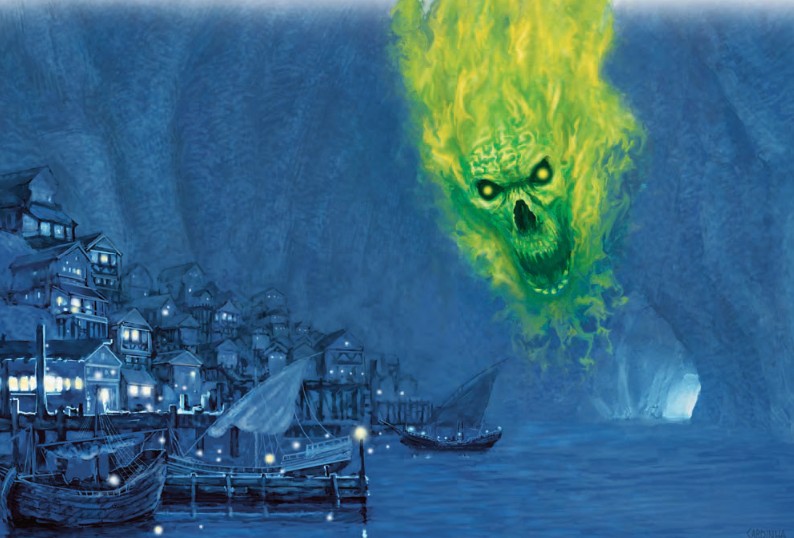
These charming beings.
Source: City of Splendors: Waterdeep
And what were the dwarves of Clan Melairkyn doing at this time? They were repelling invaders from their home of Melairbode.
In the year -677 DR, the drow of Karsoluthiyl (again with the elf naming conventions…) struck against the dwarves of Melairbode. This conflict would span over centuries, with most of the fighting relegated to inconclusive skirmishing between the two forces. The fighting dragged on, and on, and on, until finally one side struck a decisive blow.
In the year 34 DR, the drow of Karsoluthiyl mustered a grand army and struck at the head of Clan Melairkyn. The drow army overpowered the dwarven defenders and fought their way to the king himself. King Melair IV fell in battle, and with him, Melairbode. The dwarves were forced to flee deeper and deeper into their tunnels, while the drow claimed the realm as their own.
They named it Kyorlamshin, and established a chain of portals to connect their new domain with their home of Karsoluthiyl.
But while wars raged and civilizations crumbled beneath the earth, above other civilizations grew.
Just The Worst Wizard
A tribe of humans known as the Illuskans fled the intertribal tensions that had wracked their formed home in the kingdom of Ruathym. The Illuskans spread, with some of them establishing a city known as Tavaray at the mouth of Deliymbyr, to the south of where Waterdeep now sits.
Tavaray flourished and the Illuskans there spread their influence. Including the plateau above what is now known as Deepwater Harbour. By 52 DR, the Illuskans had begun farming here, establishing permanent settlements.
The Illukans’ domain was unchallenged for over a century. Then a stranger came to Deepwater Plateau.
Halaster Blackcloak, a powerful wizard and well-known jerk chose a spot on the plateau to the North and West of the Illuskan farms to build himself a tower. There, he brought his apprentices, the Seven, and he soon emerged from his tower to convince the locals to leave him be.
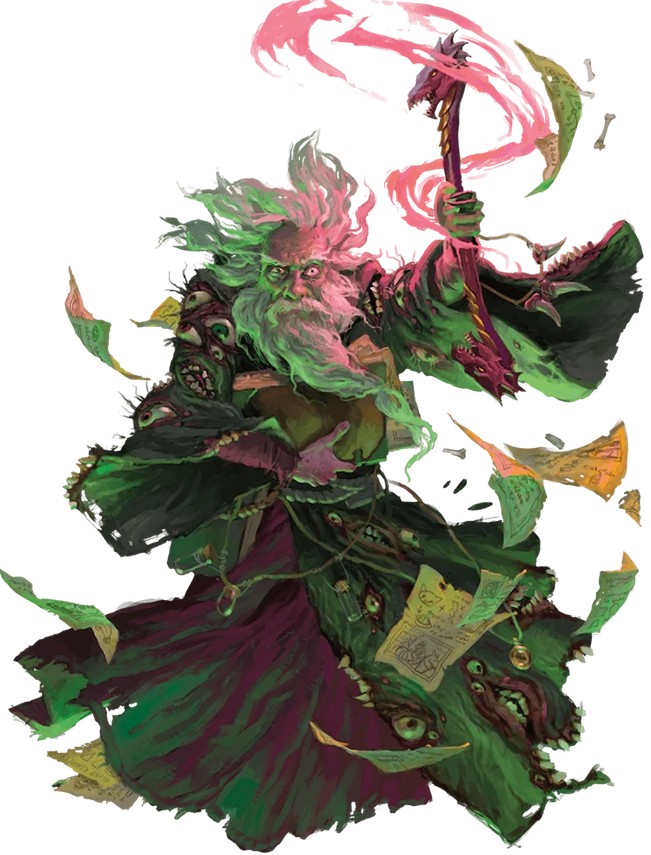
This jerk.
Source: Waterdeep: Dungeon of the Mad Mage
Then he retreated into his tower and began his real work.
Halaster knew of the halls of Melairbode beneath the plateau. And more importantly, he knew he wanted them for himself. Starting in 171 DR, Halaster began delving down into the Underhalls in a series of events known as “Halaster’s Hunts”. On these trips, he would mercilessly and brutally hunt down the drow and duergar - or dark dwarves, as some call them - who had inhabited the region and exterminate them.
On his own, Halaster did to the drow what they had needed an army to do to Clan Melairkyn. The Seven delved to establish their own holdings underground in 207 DR. By 309 DR, Halastere ruled over what had once been Melairbode. By 493 DR, he had driven the drow away entirely.
With all this power at his command, Halaster may have been able to save Clan Melairkyn. If he had wanted to, at least. Though driven deeper and deeper into the mountain by the drow, the dwarves had survived until 211 DR, when they finally disappeared. But that isn’t quite Halaster’s style, and it’s unlikely that he paid any mind to them.
Assuming he didn’t kill a few himself for getting in his way.
On the surface, the town became known as Blackcloak Hold. The tower itself though had fallen into decay and disrepair. The locals had taken to view the structure as “cursed” and avoided it at all costs.
And given Halaster’s usual temperament, that’s likely for the best.
Meanwhile, the Illuskan City of Tavaray was ravaged by rising tides. The Illuskans were forced to flee their great city, and with its loss, lost their seat of power. As a result, their civilization waned, and the settlement of Blackcloak Hold steadily declined. Where once there had been only the Illuskans, now their people fractured and splintered into new tribes.
Unification Through Force
But they would not remain splintered for long.
A warlord named Ulbaerag Bloodhand hailing from the southern nation of Tethyr set his sights upon the conquest of the tribes of Blackcloak’s Hold in the year 482 DR. In the century or more since Halaster’s disappearance into the Undermountain, the Illuskans had splintered and feuded.
In a single generation, Bloodhand united them as one again.
And renamed the settlement Bloodhand Hold.
Under their new warlord, the settlement served as an important anchorage despite its small size. The focus of Bloodhand Hold shifted from farming to lumber and was traded to vessels that arrived each year.
But even after its people were united again, the shadow of war still loomed over the settlement. This time it was orcish tribes that threatened the Sword Coast, striking in the North. In the face of this threat, the powers of the Sword Coast formed an alliance of sorts in 523 DR. The Realm of Three Crowns, or the Kingdom of Phalorm. A new nation comprised of the major powers and ruled over by elves, dwarves, and humans. A kingdom that offered membership to Bloodhand.
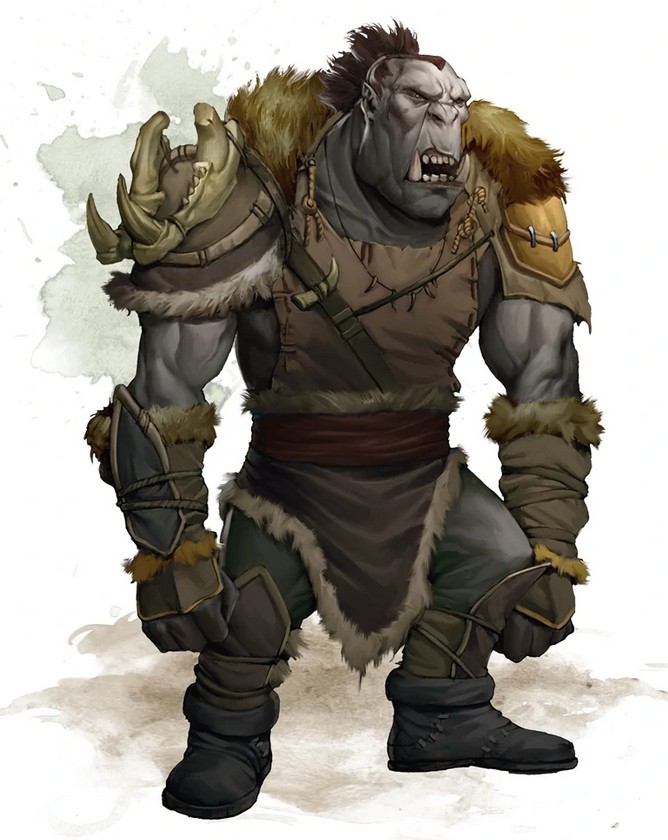
Orcs: Forcing alliances of convenience since time immemorial.
Source: D&D Beyond Monster Manual
And Bloodhand refused.
Bloodhand opted to remain independent and actively reject invitations to join the Realm of Three Crowns. It wouldn’t be until Bloodhand’s son succeeded him that Bloodhand Hold would join the alliance.
It would not last.
In 615 DR, the Realm of Three Crowns fell in battle to waves of goblinoids and the orcish Horde of the Wastes. Many warriors from Bloodhand Hold died as the orcs swept through the Sword Mountains, but they managed to shield their home from attacks.
Following this fall, Bloodhand Hold became a town in the newly founded Kingdom of Man. This too fell, this time to a succession crisis, civil war and orcish attacks in 697 DR.
Bloodhand Hold survived though. At least, for a while…
The Rise of Waterdeep
882 DR. Fleeing their home following a demonic assault, the human Barbarian Nimoar the Reaver led his tribe in a search for a new place to settle. With winter drawing near, Nimoar came across Bloodhand Hold.
And decided it would be his.
Nimoar and his host fell upon the hold and vanquished the Bloodhand tribe. Immediately he ordered the construction of a log palisade and a wooden fortress, then named it Nimoar’s Hold.
Nimoar’s Hold would see its own conflict, coming under attack twice within the next decade. Once in 887 DR by pirates from the South, and once in 889 DR by another tribe forced from their lands and seeking a home. Both times, Nimoar’s Hold prevailed.
And as the hold stood and flourished, ship captains came to know it as the “town of Waterdeep”.
The tale of Waterdeep is one filled with elves and dwarves and drow and humans. Its foundations are stained with the blood of centuries of civilizations. While it might seem that these layers are lost to time, they’re still there, waiting, haunting the city like the Skulls that still haunt their home.
If you venture beneath the streets of the city you can still find evidence of the races that once called Waterdeep home. Their homes and bones buried within the Undermountain, waiting for a fearless adventurer to find them.
I hope this article has given you some ideas on adventures to run in the City of Splendors, and if you’d like more ways to expand your game be sure to check out the Wizard’s Tower. And if you’d like to learn more about the cities of the Sword Coast, check out part one and two of my history of Baldur’s Gate.
Until next time, may fortune favor you.
-Loremaster Sokar

